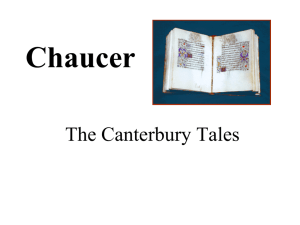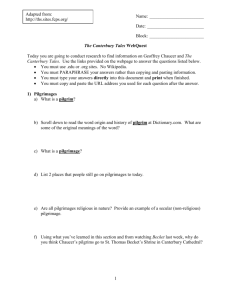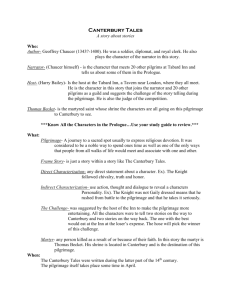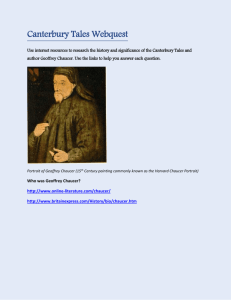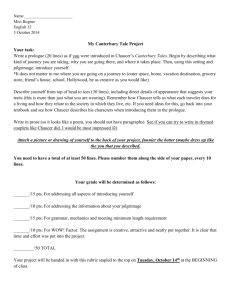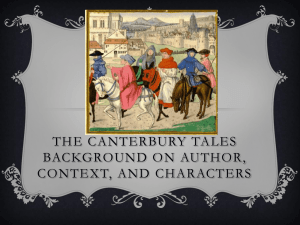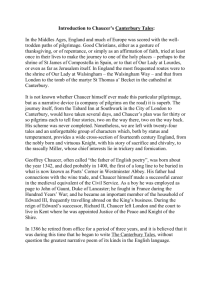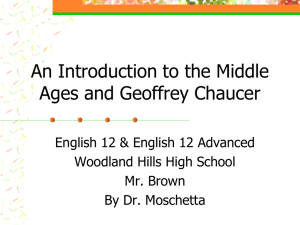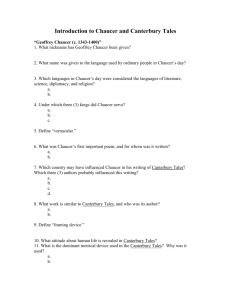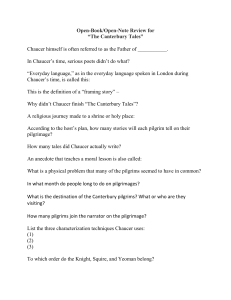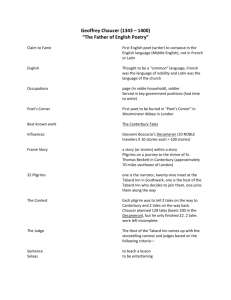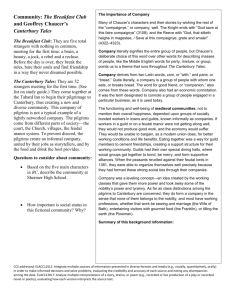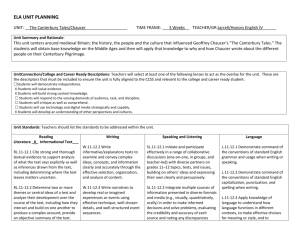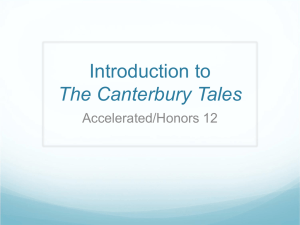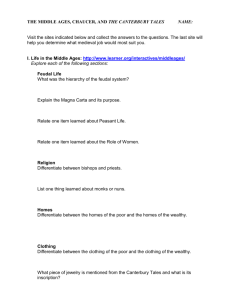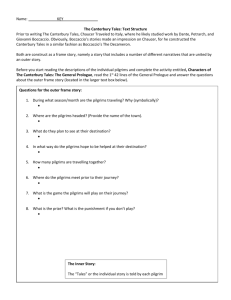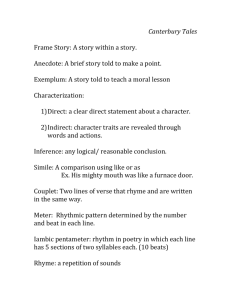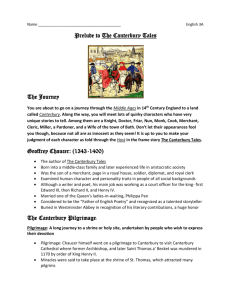“The Canterbury Tales” and the History of 14th Century England
advertisement
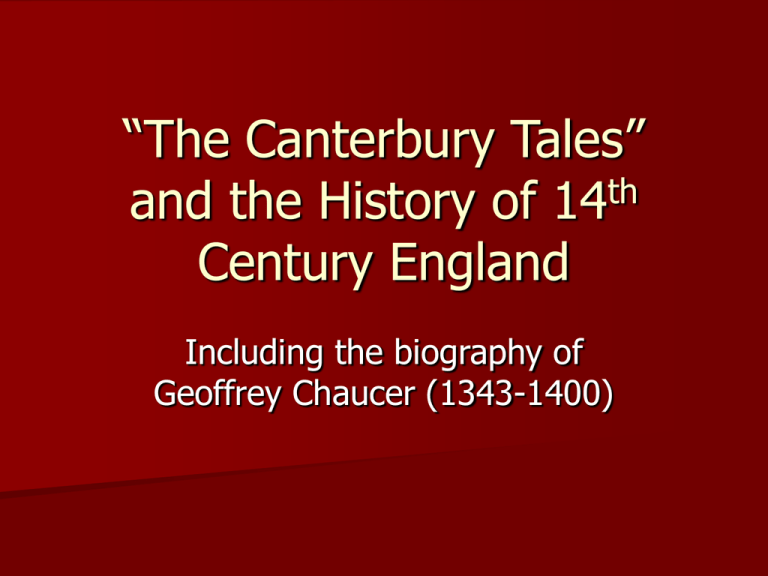
“The Canterbury Tales” th and the History of 14 Century England Including the biography of Geoffrey Chaucer (1343-1400) Medieval Social Theory England was made up of three “estates” or classes (similar to that of the feudal system) –The Nobility –The Church –The Commoners The Nobility Composed of a small hereditary aristocracy Mission on earth was to “rule over and defend the body of the politic” (people). Usually had most of the money and land ownership The Church Look after the spiritual welfare of the people. Usually divided amongst the people, but Christianity comprised most of the religion of the people. The Commoners Provided the work and labor to sustain the society. Agricultural workers Fishermen Merchants Social Change at the end of the 14th Century World changing more rapidly Different social classes were intermarrying Some merchants becoming richer than land owners Brought about economic, social, and political change. Emergence of the “Middle Class” Hundred Years War Takes place between France and England from 1337-1453 (116 years all together) – Times of peace in between, but roughly 100 years of warfare between the two. English Kings were descendants of the French Kings (Invasion of England by the Normans in 1066). French kings upset that English kings had more land then them, so the went back and forth about who could control which lands and how much. “The Black Death” Also called the “Black Plague” or “Bubonic Plague of the 14th Century” Killed nearly one-third (1/3) of Europe’s entire population from 1347-1351 A.D. Caused upheaval against various religious and social groups including: Catholics, Jews, Muslims, Foreigners, Beggars, etc. Slowed the progress of the Hundred Years War Geoffrey Chaucer Born in London, 1343, son of a wine merchant Grew up in “London Vintry,” where ships docked with wines from France and Spain Grew up during the Hundred Years War & Black Death Pandemic Chaucer grew up around various people from different walks of life. Learned new languages: French & Latin Geoffrey Chaucer Chaucer becomes apprenticed to nobility –Fine Schooling at the Count of Ulster –Learned etiquette and manners –Followed a strict Christian practice. Worked on keeping books during the Hundred Years War for Edward III. Becomes ambassador and travels to Spain, France, Italy, etc. and learns more languages and skills. Pilgrimage to Canterbury The pilgrimage from Southwark (Southern part of London) to Canterbury took 10-14 days depending on weather conditions and number of travelers. The Canterbury Tales Idea contrived originally in 1386 Story was to be a collection of 120 stories that were told by various pilgrims on a pilgrimage. (30 pilgrims: 2 stories on the way there, 2 stories on the way back). Published version: 24 stories (2 in prose, 22 in verse) Pilgrimage was for Thomas à Becket – Archbishop of Canterbury that was murdered at his cathedral in 1170 A.D. “Odd assembly on purpose” The Canterbury Tales Tales were told by characters from different “walks of life”—stories told in social order. Idea was to give the readers a perspective with respect to values & characteristics ascribed to particular social or economic groups (middle class, religious officials, etc.) Stories are competitive, follow various formats, different tones, different narrators, etc. Stories reflect the values of the characters that orated them. “General Prologue” Introduction of the story Introduction of the characters –Special emphasis placed on characterization Physical appearance, clothing, accessories, behaviors, etc. Understanding their place with regard to social status is indicative of what kind of story they are likely to produce. Allows reader to establish moral judgments. Seven Deadly Sins One of the underlying motifs in the tales is the use of the Cardinal Sins – Wrath • Through elaborate characterization, nearly all of – Pride Chaucer’s pilgrims were seemingly – Envy guilty of one or more of these sins. – Greed • Emphasis of sin was based on physical appearance, behavior, – Gluttony monetary situation, and/or allusion to sexual perversion. – Sloth – Lust Are you a sinner?????


